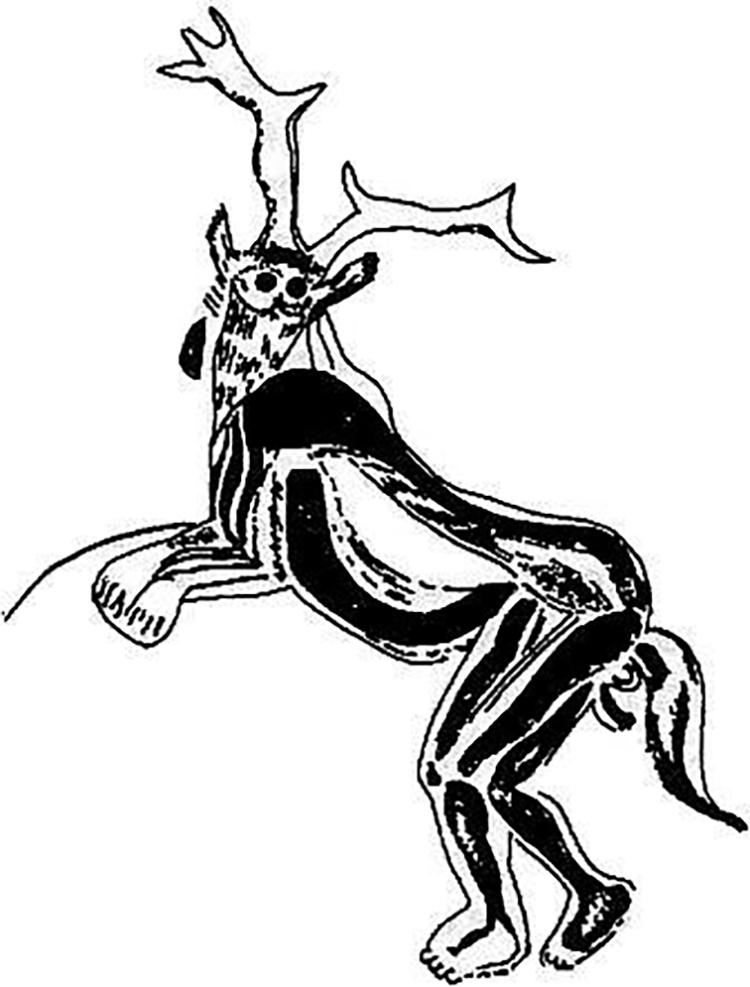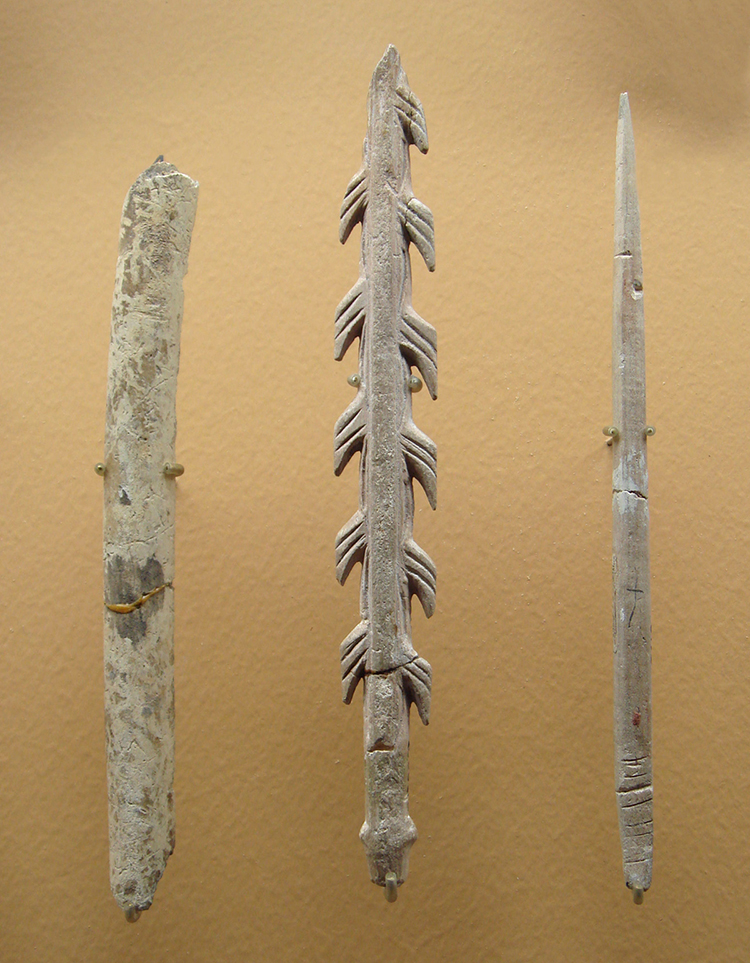However, intact prehistoric sculpture remains a rare find for archeologists, though not impossible.
And when discovered, they provide a fascinating insight into the lives of the earliest cultures.
Among the wonders of the caves is a small, complex sculpture of two bison sculpted in clay.

Henri Breuil, Émile Cartailhac, and Henri Bégouën and his sons in front of the entrance to the Cave of Tuc d’Audoubert in July 1912. (Photo:Wikimedia Commons[Public domain])
The River Volp flows through the foothills of the Pyrenees Mountains range which separates France and Spain.
Near the commune of Montesquieu-Avantes in southwestern France, the river flows under rocks for some length.
The system of caverns is technically three separate caves, only two of which are connected.

A cave painting inside the Cave of the Trois-Frères (Three Brothers), originally dubbed “the Sorcerer.” The above drawing is based on the original sketches of Henri Breuil. (Photo:Wikimedia Commons[Public domain])
Called Trois-Freres (three brothers), Enlene, and Tuc d’Audoubert, the three caves contain three levels.
The river flows through the lowest, while the other levels host rooms of varying sizes.
It was inside Tuc d’Audoubert that the young men encountered cave walls engraved and painted with paleolithic art.

Magdalenian tools dating from between 17,000 and 9,000 BCE. Found in Abri de la Madeleine, Dordogne, France. (Photo: World Imaging viaWikimedia Commons[CC BY-SA 3.0])
Careful exploration of the caves turned up hundreds ofexamples of artworkby the Stone Age Magdalenian peoples.
The findings at the three caves added to the repertoire of ancient art attributed to the culture.
In the Enlene cave, bone and ivory fragments carved with animal depictions were discovered.
Throughout the cave, 103 animals are depicted on the walls and floors.
These include horses, reindeer, and big cats.
Some of the mysterious figures shown on the walls have captivated scholarly interest while their meanings remain elusive.
Found in the Trois-Freres cave, the design was initially recorded by Henri Breuil.
He sketched what gives the impression of a man-animal mystical figure.
Theories abound as to the identity and importance of this figure.
Perhaps it is some mythical king of the beasts.
Thier very realistic appearance was created using a combination of hand and tool.
The clay used was clearly carved from the wall of an adjoining cavern.
Experts suspect the bison statue had a ritualistic purpose like much of the other cave art.
Many representations of the beasts were found throughout including one carved on the floor near the clay statue.
It seems these large beasts held an important place in Magdalenian culture.
A cave painting inside the Cave of the Trois-Freres (Three Brothers), originally dubbed the Sorcerer.
The above drawing is based on the original sketches of Henri Breuil.
Magdalenian tools dating from between 17,000 and 9,000 BCE.
Found in Abri de la Madeleine, Dordogne, France.